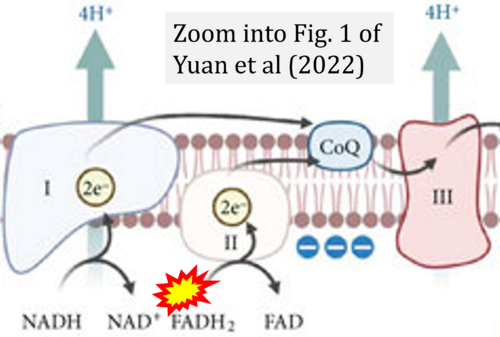Difference between revisions of "Yuan 2022 Oxid Med Cell Longev"
| Line 7: | Line 7: | ||
|abstract=Energy intake and metabolic balance are the pillars of health preservation. Overnutrition causes nonspecific, persistently low inflammatory state known as metabolic inflammation. This condition contributes to the pathophysiology of various metabolic disorders, such as atherosclerosis, obesity, diabetes mellitus, and metabolic syndrome. The mitochondria maintain the balance of energy metabolism. Excessive energy stress can lead to mitochondrial dysfunction, which promotes metabolic inflammation. The inflammatory environment further impairs mitochondrial function. Accordingly, excellent organism design keeps the body metabolically healthy in the context of mitochondrial dysfunction, and moderate mitochondrial stress can have a beneficial effect. This review summarises the research progress on the multifaceted characterisation of mitochondrial dysfunction and its role in metabolic inflammation. | |abstract=Energy intake and metabolic balance are the pillars of health preservation. Overnutrition causes nonspecific, persistently low inflammatory state known as metabolic inflammation. This condition contributes to the pathophysiology of various metabolic disorders, such as atherosclerosis, obesity, diabetes mellitus, and metabolic syndrome. The mitochondria maintain the balance of energy metabolism. Excessive energy stress can lead to mitochondrial dysfunction, which promotes metabolic inflammation. The inflammatory environment further impairs mitochondrial function. Accordingly, excellent organism design keeps the body metabolically healthy in the context of mitochondrial dysfunction, and moderate mitochondrial stress can have a beneficial effect. This review summarises the research progress on the multifaceted characterisation of mitochondrial dysfunction and its role in metabolic inflammation. | ||
}} | }} | ||
[[File:Yuan 2022 Oxid Med Cell Longev CORRECTION.png|500px|right]] | |||
{{Template:Correction FADH2 and S-pathway}} | |||
: | |||
{{Labeling | {{Labeling | ||
Revision as of 13:31, 19 March 2023
| Yuan Q, Zeng ZL, Yang S, Li A, Zu X, Liu J (2022) Mitochondrial stress in metabolic inflammation: modest benefits and full losses. Oxid Med Cell Longev 2022:8803404. doi: 10.1155/2022/8803404 |
Yuan Q, Zeng ZL, Yang S, Li A, Zu X, Liu J (2022) Oxid Med Cell Longev
Abstract: Energy intake and metabolic balance are the pillars of health preservation. Overnutrition causes nonspecific, persistently low inflammatory state known as metabolic inflammation. This condition contributes to the pathophysiology of various metabolic disorders, such as atherosclerosis, obesity, diabetes mellitus, and metabolic syndrome. The mitochondria maintain the balance of energy metabolism. Excessive energy stress can lead to mitochondrial dysfunction, which promotes metabolic inflammation. The inflammatory environment further impairs mitochondrial function. Accordingly, excellent organism design keeps the body metabolically healthy in the context of mitochondrial dysfunction, and moderate mitochondrial stress can have a beneficial effect. This review summarises the research progress on the multifaceted characterisation of mitochondrial dysfunction and its role in metabolic inflammation.
Correction: FADH2 and Complex II
- FADH2 is shown as the substrate feeding electrons into Complex II (CII). This is wrong and requires correction - for details see Gnaiger (2024).
- Gnaiger E (2024) Complex II ambiguities ― FADH2 in the electron transfer system. J Biol Chem 300:105470. https://doi.org/10.1016/j.jbc.2023.105470 - »Bioblast link«
Labels: MiParea: mt-Medicine
Pathology: Obesity
Pathway: S


